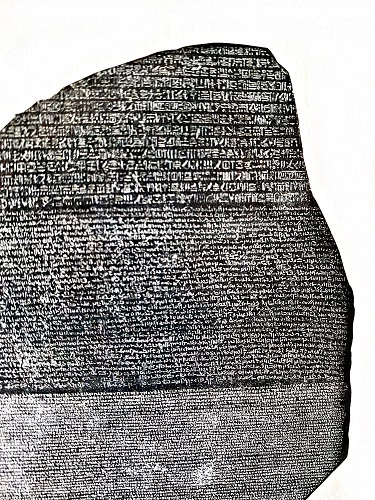
Stone Code - Intellectual Adventures
One of history's great intellectual adventures began on a summer day in 1799 when, near the Egyptian city of Rosetta, soldiers in Napoleon's ranks found a slab of back basalt engraved in three languages. The stone's script's - Greek, demotic (a simplified Egyptian script) and hieroglyphics - seemed to render the same message. If linguists could match the hieroglyphs to the Greek, all of Egyptian literature would be theirs.
It took until 1822 for Jean-Francois Champollion to discover that hieroglyphics mixed phonetic and symbolic meanings; that some texts should be read right to left, others left to right or top to bottom; and that some symbols had two different meanings. This breakthrough, and the translations it produced, led to revelations both humbling and exhilarating: The Egyptians knew medicine, astronomy,geometry. They used weights and measures and had an organized system of government. They were passionate, too: "Your voice is like pomegranate wine, " ran one poem. The Rosetta Stone, along with discoveries at Hercula - neum and Lascaux, taught us that each age, including our own, occupies but a small space in the continuum of time.
